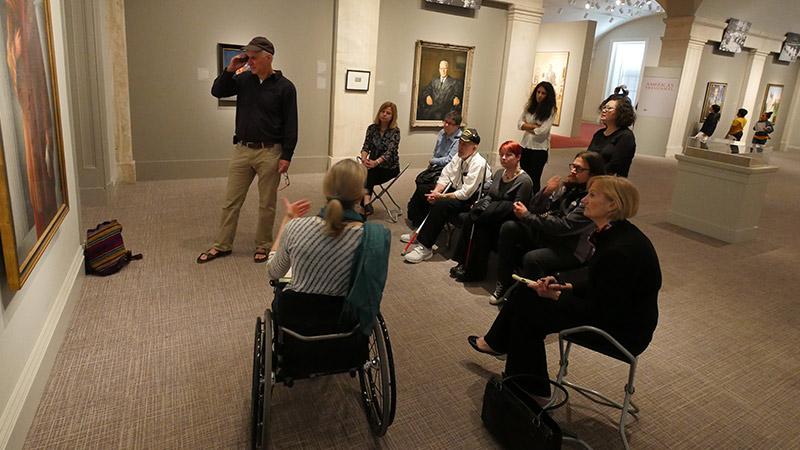The University of Westminster hosted the Workshop for Inclusive Co-created Audio Description (W-ICAD) on 24 March at Regent Campus, funded by the Arts and Humanities Research Council (AHRC). This presented a new tool that challenged traditional approaches to museum access provision by enabling museums to develop inclusive audio description, co-created by blind, partially blind and sighted people for blind, partially-blind and sighted museum audiences.

The event was organised in collaboration with Westminster’s project partners, the Watts Gallery and Artists Village, the Smithsonian National Portrait Gallery, VocalEyes, and Access Smithsonian. Speakers included Dr Alison Eardley, Psychologist and Senior Lecturer in the School of Social Sciences at the University of Westminster, and Professor Hannah Thompson from Royal Holloway, University of London; with Vanessa Jones from the Smithsonian National Portrait Gallery; Laura Macculloch from Watts Gallery and Artists Village; and Dr Deborah Husbands, Senior Lecturer at the Westminster School of Social Sciences.
The symposium drew on recent research carried out in the US and the UK which explored the purpose and nature of audio description (AD) within museums, and its adaptation as a museum experience for all participants.
Following the welcome and introduction from the research team, an explanation of the W-ICAD model took place, along with a practical session, group work and discussion. The W-ICAD model was designed for the co-creation of subjective museum AD, as described by groups of blind, partially blind and sighted museum visitors.
Through the provision of practical tools to be used within museums and cultural organisations, the workshop challenged the notion of access, the distinction between abled and disabled people, the lack of accessibility support, and the idea that AD is created by non-blind people to be used by blind people.
Talking about W-ICAD, Dr Eardley said: “The key to the success of this project has been the international collaboration of academics and museum professionals. Together, we have challenged two implicit biases. First is that sighted people can automatically access art, simply because they can see. The second is that blind and partially blind people have an inferior experience of art, because they do not have full vision. The result is the W-ICAD model – a tool that audiences can draw on to provide all audiences with new inclusive ways of experiencing museum collections.”
Another W-ICAD symposium is being held at the Smithsonian National Portrait Gallery in Washington, on 28 April. From the University of Westminster, the speakers will include Dr Eardley, and Dr Lindsay Bywood, Research Fellow at the School of Social Sciences.
Learn more about Museums, Galleries and Contemporary Culture MA course at the University of Westminster.


